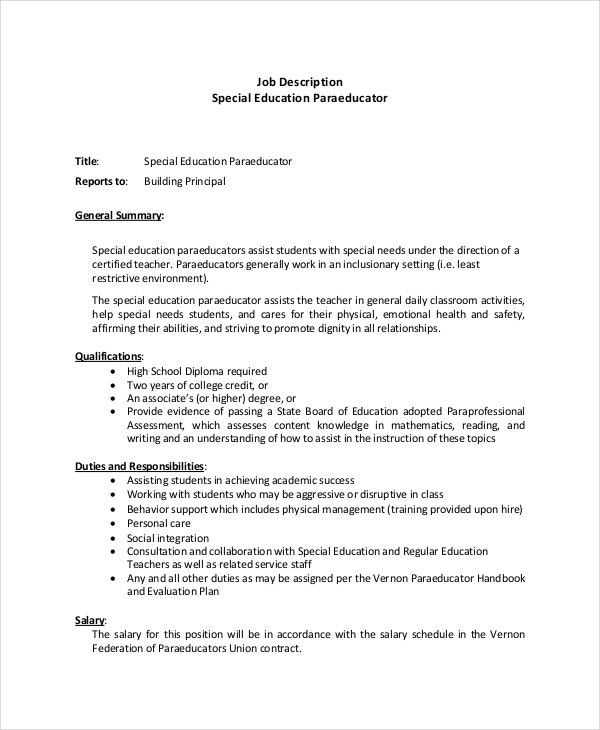
What is a Para Educator Job Description?
What is a para educator job description? What are the duties and qualifications for this position? What are the salary expectations? What is the employment outlook for this position? The following article will give you an overview of what you can expect in this field. Read on to discover more. Whether you want to become a para educator or simply want to learn more about this field, there is a job description out there for you. You’ll be glad you read it!
Qualifications
A qualified paraprofessional is someone with a high school diploma, experience in working with children, and a passing score on the District Skills Test. They must have excellent oral and written communication skills and a desire to work in an educational setting. They should be able to work well under pressure and be compassionate to students. They should have experience teaching in a classroom environment and have a good understanding of educational techniques and behavior management.
A typical paraeducator job description includes helping the teacher implement procedures and policies and providing additional assistance to the children. This professional must also be comfortable working with parents and the public and interacting with children of all ages. A paraeducator must be a graduate of an educational program and have excellent computer skills. They should have experience working with students with special needs. They should be able to maintain a safe and orderly environment.
Duties
The duties of a para educator may include assisting in the classroom, providing health services, and supervising students with special needs. These duties may include performing routine physical health exams and administering medications. They may also be required to supervise students with special needs on school buses, and to ensure that students are safely positioned in specialized equipment. Duties of a para educator may include implementing behavioral and educational programming under the supervision of the teacher or another licensed professional.
A typical para educator resume lists experience with the Marysville Joint Unified School District, Orange County High School, and Quincy Public Schools. These districts currently have a total of 15 open positions, so it’s possible to find one that suits your qualifications. The Marysville Joint Unified School District has 15 openings, while the Orange County High School and Quincy Public Schools each have eleven. These positions require an education degree, as well as experience in the following areas.
Salary
A Para Educator salary is roughly $30,000 per year in the United States. Salaries for similar jobs are also close to this figure. The highest paying paraeducators work in the government sector. Listed below are the job duties and salary ranges of para educators. Salary ranges are based on median pay, which means that half of those in the profession make more than half of that figure. While para educators are often paid less than teachers, their salary potential is considerable.
Depending on the setting, a paraeducator’s job may be more varied than a teacher’s. They may provide one-on-one tutoring, assist with classroom management, or act as a translator. They may also assist the teacher in creating a safe and orderly classroom environment. These employees typically have specialized training, including methods of working with students with disabilities and dealing with disruptive students. Paraeducators typically work full-time, but may work part-time for administrative duties, such as staff meetings, and participate in professional development. Additionally, some may work in before and after-school or summer school programs.
Employment outlook
If you’re interested in becoming a para educator, there’s good news for those seeking a career in education. Job prospects for this career are positive, with a projected 9 percent growth by 2022. There are many job opportunities for paraeducators, including public and private schools, preparatory programs, child care centers, and more. In addition to teaching, paraeducators also have a strong foundation for future careers in education.
During the early post-World War II baby boom, paraeducators were introduced to classrooms in the United States. Today, they are major participants in the education process, providing special services to children with disabilities, English as a second language, and other needs. Their role is especially important in small, rural schools, which often struggle to recruit qualified teachers. However, the job role of a paraeducator has become more complex and varied in recent years.
